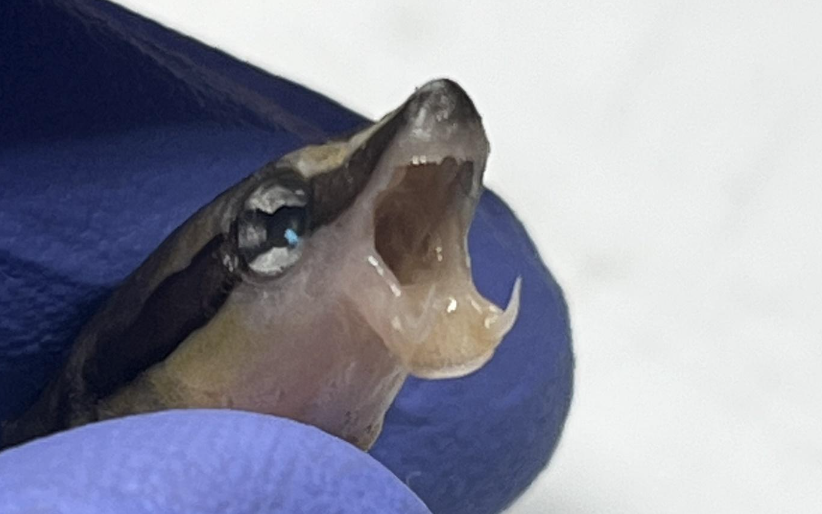Wholesalers, LFS owners, and fellow hobbyists, let me tell you something. This freaky thing might well be lurking in your holding pens and display tanks, hidden in plain sight. What even is this? Why would this very real threat be closer and more devastating than you think? How can you deter this threat? This is what we will be exploring in this article.
A Wolf In Sheep’s Clothing
The coral reef habitat is really a beautiful scene that feels like Finding Nemo, where Mr. Ray brings the children on field trips exploring the reef with every animal thriving under each other’s company. Whether you like it or not, it is the complete opposite, the coral reef habitat is a battlefield with every single species competing for survival, and a lot of them come up with pretty unorthodox tactics to live longer, such as aggressive mimicry.
Making yourself look like a predator or a dangerous species is a good way to avoid getting preyed upon, just like Aspidontus taeniatus, also known as the False cleanerfish. A fang blenny that mimics the appearance and behavior of Labroides dimidiatus, the Bluestreak cleaner wrasse.
Why? Because this species of blenny mainly feeds on fish eggs and reportedly fish fins and flesh. To pull this off they need to be able to get close to a fish to do the damage, cleaner wrasses are well known for their cleaning behavior, and thus are welcomed even by large predatory fish in which they would not view cleaner wrasses as a prey item.
So, the false cleaner wrasse would go near cleaning stations and start to dance like a cleaner wrasse to attract clients, when the target is close enough, they would sink their terrifying teeth into the client and tear off a chunk of fin or flesh. It is also believed that they would try and get near and attempt to eat the egg clusters of benthic spawning species.
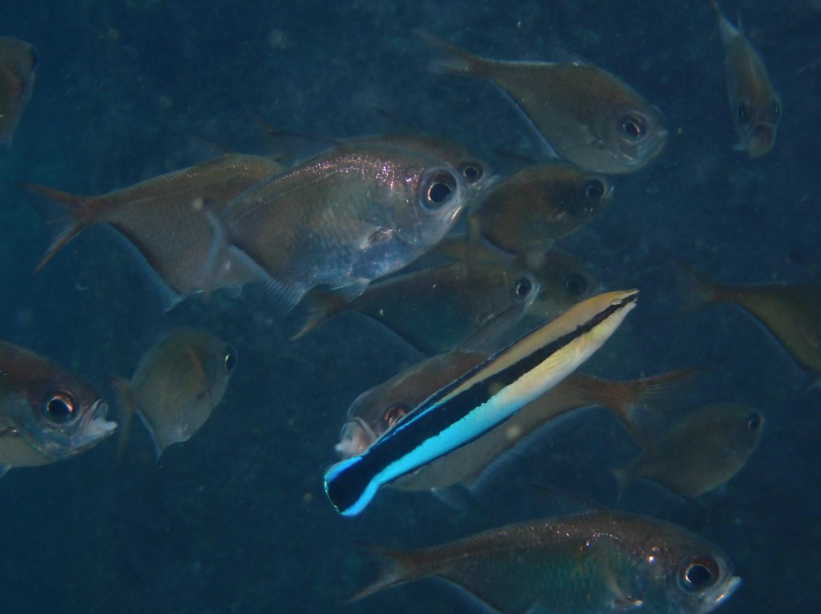
What does this mean for us?
Because the entire genus of the cleaner wrasses especially L. dimidiatus, is one of the most imported species of aquarium fish, thousands and thousands of this species from various places are frequently collected and brought into the trade. And there will be blennies that got mixed into shipments that somehow manage to get through the collection, holding facilities, and handling processes and arrive at an LFS unnoticed.
A fish with such “toxic” behavior that looks painstakingly like one of the most popular aquarium fish is not a good thing. This means that all parties that would frequently interact with cleaner wrasses would potentially be at risk.
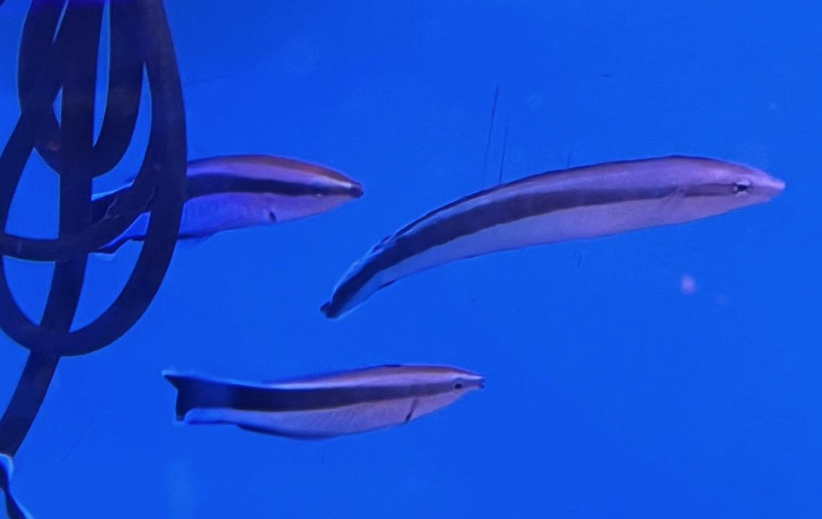
I have been very interested in this species ever since I have known their existence and have been observing and tracking down these fish both in the wild and around LFSs, especially when I was working at one between secondary and University. And over the years I have noticed a lot of interesting things about them, including their behavior in captivity and how to easily tell one apart. I figured my experience would be useful here.
How To Tell One Apart?
Here comes the question; how do I identify one? Initially, it would be difficult to differentiate between a cleaner wrasse and a mimic, but once you have figured one out, the rest will be easy. The following are some key features that are worth observing.
Size
Although the max size of A. taeniatus and L. dimidiatus are largely the same, about 12-14cm, most of the time mimics come in a lot larger than the cleaners, so keep an eye out when you see abnormally large individuals when unboxing a shipment or when you’re browsing an LFS. Interstingly the one I saw in the wild is way larger, about 15-17cm.
Movement and Behavior
The movements and behavior of both species can at times be very different. While cleaners are your typical wrasse-like swimming pattern which the fish smoothly cruises along; The swimming pattern of A. taeniatus is what I describe as a mix of a wrasse and a Midas blenny, almost eel-like, but in open water the mimic can perfectly replicate the cleaner’s swimming pattern.
When in retail settings cleaner wrasses usually would be actively swimming around even when they are not cleaning; While the mimic acts completely like other blennies would, hiding in crevices when given the chance to and only poking its head out. Or sometimes leaning into a corner. Sometimes in less crowded or larger holding tanks, the cleaners would distance themselves and in some instances even clean the mimic. So keep an eye out for any cleaners that act strangely.
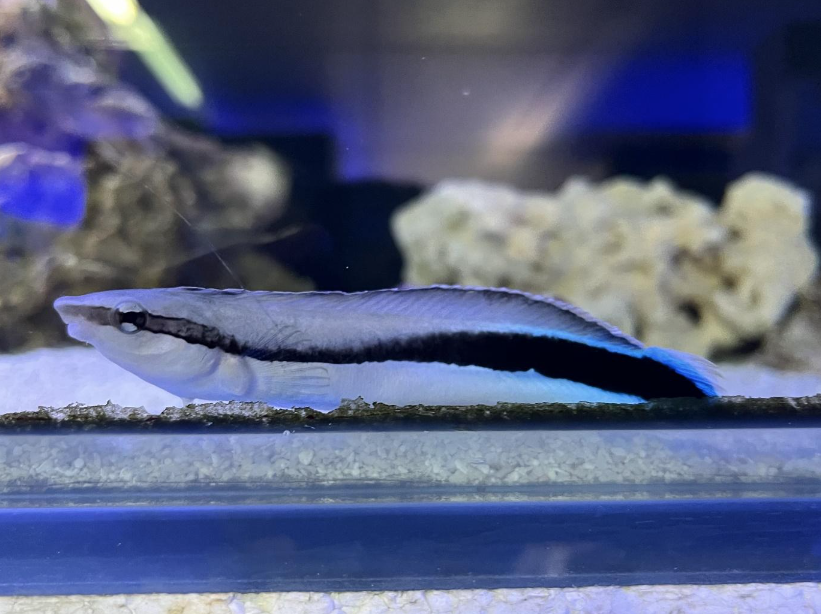
Mouth position and Body Shape
If you are familiar with these two species you can instantly tell them apart by looking at their overall body profile. The most prominent one is the head. The mimics have a pointed snout and a mouth below the eye, you can only see the fangs when the jaw is fully open but you can see a “smirk” expression on a mimic, obviously, cleaners do not have fangs. The real cleaners have their small mouth at the tip of the snout. The mimics are very skinny, which differs from not having the “fat belly” that the cleaners have.
Stress coloration
When the false cleaner wrasse is under stress, it would basically turn into a lawnmower blenny where its body would turn grey with patterns ranging from grey, brown to white.
Other features
Another easy one is to look at the area below the pectoral fin, where L. dimidiatus has an obvious black mark which the mimic lacks. The dorsal fin of both species is different, where the mimic’s dorsal fin extends all the way to the head instead of only halfway.
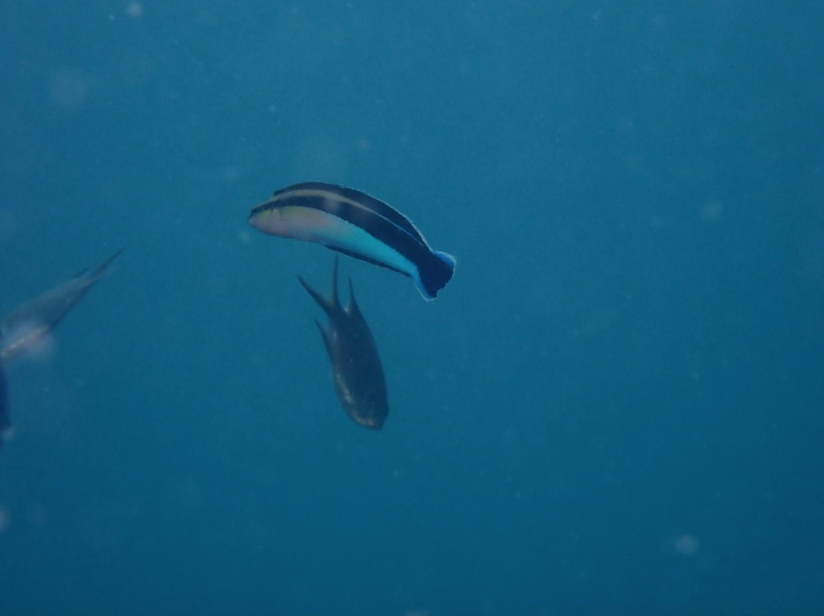
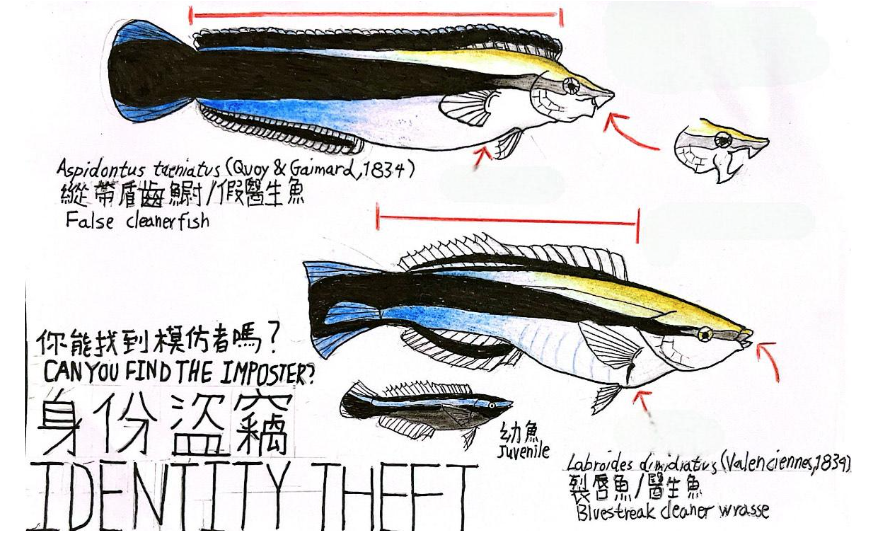
Antics In Captivity
It goes without saying that behind their goofy looks, they are not the friendly Midas blenny you think they are. They like to bite, including fish and you.
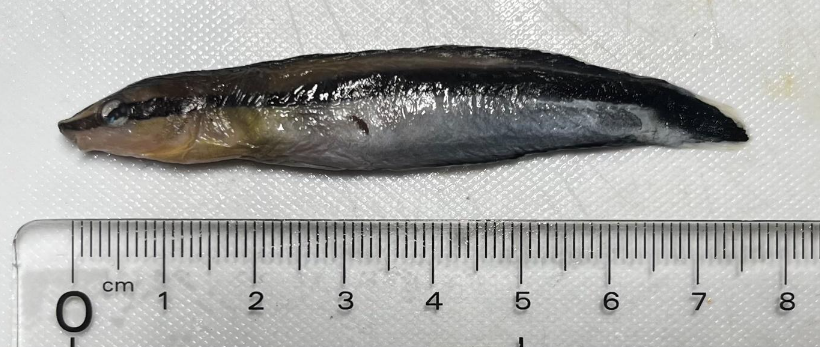
When housed with other fish, and especially in crowded holding pens, these fish would attack other fish nearby as well as sometimes cleaner wrasses and their own. They will almost always leave deep bite marks behind that can cause a lot of problems and even death for the victim as the wound can be quite large and infection is a real risk.
I had experience handling these fish and I got bitten a couple of times as they would not hesitate. There are mixed experiences about this species online, some say they are pretty peaceful but in my experience, they are quite unpredictable at times.
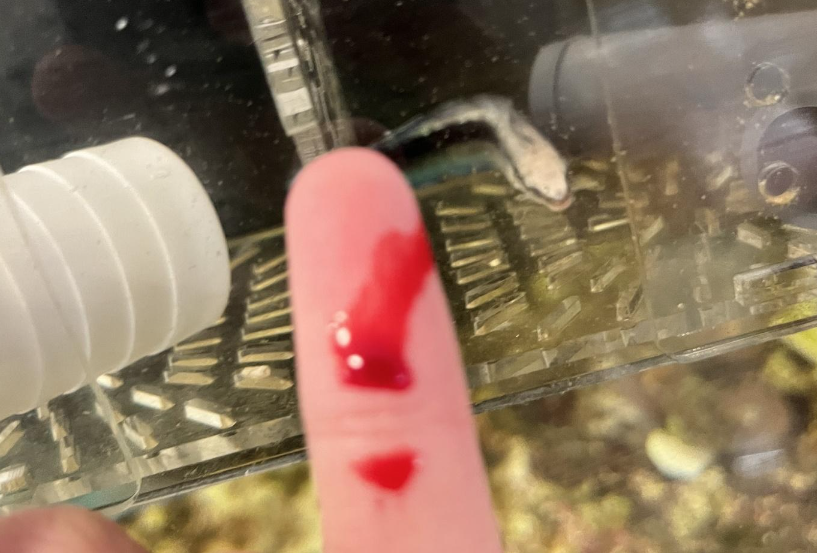
An Oddball Showpiece?
Although the false cleanerfish would most likely be considered a pest, that doesn’t mean that they make bad pets. As a matter of fact, the behaviour exhibited by A. taeniatus is not commonly found in the reef aquarium hobby therefore they would really make an interesting oddball fish maybe in a nano reef or sump refugium where it can live by itself.
The best part of this is, that this is not a fish that you can find readily available at your local LFS nor you can ask the LFS to order one for you, because they are not supposed to be imported into the aquarium trade, at least intentionally. So to find a false cleanerfish is actually quite a tedious task as not a lot of LFS even know this fish exists, and even if they do they might think you are crazy, heck some LFS might even get rid of it if they found one in their cleaner wrasse shipment. So I think the false cleanerfish is a truly priceless oddball fish that is really worth keeping if you manage to find one.
Care
Like most other fang blennies, husbandry is pretty straightforward. However, they should be housed by themselves in their own enclosure or in a sump as mentioned above. They are shy initially and they need to be fed meaty foods like mysis and krill to get them going but later on, you can supplement their diet with prepared foods. One important aspect is to make sure that the enclosure has a tight-fitting lid to prevent them from escaping, and enough hiding areas must be provided so that they can completely hide away, if not they would not eat and eventually starve.
Conclusions
In my opinion, this species of fish is a great example of the amount of potential cryptic stuff that secretly shows up in the hobby and one truly obscure but fascinating case. If you like oddball fish or a blenny that looks an awful lot like a cleaner wrasse but bites everything, the False Cleanerfish would probably be the oddball fish for you. Happy reefing.
About the author
Chelmon Leung is a reef aquarium hobbyist and recreational diver based in Hong Kong and is currently studying in Australia for a Marine Science degree. He moved from freshwater aquariums to saltwater and reef aquariums in his late secondary school years and is now an advanced beginner to intermediate-level hobbyist.
He started scuba diving in 2023 because of his interest in marine life, specifically the marine ecosystem of his hometown and he has a morbid interest in oddball corals, weird fish, and other lesser-known aquarium livestock. He has an Instagram page dedicated to these topics and has undying passion and extreme optimism when exploring his favorite topics.


